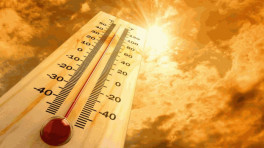Why New Zealand's volcano alerts aren't forecasts
The alert level was not raised until after Monday’s deadly eruption, when it was briefly lifted to 4 before it was lowered to 3 later in the day

New Zealand's geological agency downgraded its "alert level" for the White Island volcano this week - at the same time its own scientists said another eruption similar to Monday's deadly blast was increasingly likely.
The apparent juxtaposition, which has confused many observers, arises because GeoNet's Volcanic Alert Level System is not a forecast, although people might assume it is.
At the time of Monday's eruption, the Volcanic Alert Level was set at 2, around the middle of a six-step 0-5 scale used by GeoNet and signaling "moderate to heightened volcanic unrest" - not enough to stop regular tourist trips to the island.
The alert level was not raised until after Monday's deadly eruption, when it was briefly lifted to 4 before it was lowered to 3 later in the day.
On Thursday, the same day that volcanologists said rising tremor activity had increased the chances of another eruption in the following 24 hours to 50-60%, Geonet lowered the alert level back down to 2.
Geonet stresses on its website that the system "reflects the current state of the volcano and does not provide a forecast of future activity. An eruption may occur at any level."
"The Alert Level number itself is a really coarse mechanism to give a heads-up for a status change in the volcano."
The tragedy at White Island - the Maori name for which, Te Puia o Whakaari translates to "the dramatic volcano" and "that which can be made visible" - could lead to changes in the notification system in a country that is home to dozens of volcanoes.
New Zealand's largest city, Auckland, sits on a volcanic field made up of about 50 volcanic cones and craters that have erupted over the past 250,000 years. Some have daily tours.
Mount Ruapehu on the central North Island has erupted several times in recent years but is still a major tourist attraction, with ski resorts on its slopes.
Prime Minister Jacinda Ardern noted that when White Island last erupted in 2016, during evening when no one was on the island, the alert level was 1.
"So it is an unpredictable volcano," she told Australian radio after announcing an inquiry into the tragedy and the wider volcano tourism industry. "Having said that, that's not sufficient in terms of explanation as to whether or not the right checks and balances were in place."
- Eruption hazards depend on the volcano and eruption style, and may include explosions, ballistics (flying rocks), pyroclastic density currents (fast moving hot ash clouds), lava flows, lava domes, landslides, ash, volcanic gases, lightning, lahars (mudflows), tsunami, and/or earthquakes.
- Volcanic unrest hazards occur on and near the volcano, and may include steam eruptions, volcanic gases, earthquakes, landslides, uplift, subsidence, changes to hot springs, and/or lahars.
- Volcanic environment hazards may include hydrothermal activity, earthquakes, landslides, volcanic gases, and/or lahars.


 Keep updated, follow The Business Standard's Google news channel
Keep updated, follow The Business Standard's Google news channel
















